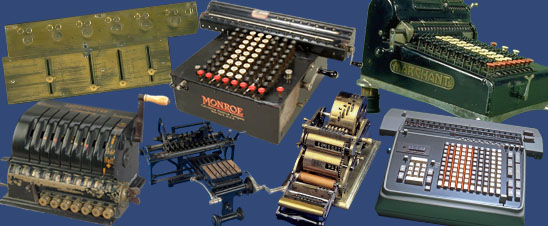This pinwheel, lever-set, non-printing calculating machine was made by the French firm of Chateau Frères, sold under the name Dactyle, and constructed on the design of the Swede W. T. Odhner.
- Description
-
This pinwheel, lever-set, non-printing calculating machine was made by the French firm of Chateau Frères, sold under the name Dactyle, and constructed on the design of the Swede W. T. Odhner. Odhner-style machines were first made in Russia (as Odhners), then in Germany (as Brunsvigas) and then in France (as the Dactyle, from about 1905).
-
In 1910, about a year after this machine was made, R. H. Marchant of San Francisco, the American agent for the Dactyle, decided to go into business himself, building a very similar machine. The Marchant Calculating Machine Company officially was incorporated in 1913, and made a wide range of calculating machines into the 1950s.
-
The machine, painted black, has nine levers toward the top for setting numbers. The operating crank is on the right side. In front is the carriage, with ten numeral wheels on the left for counting revolutions and 18 numeral wheels on the right for recording totals. The numeral wheels of the revolution counter are numbered from 0 to 9 in white and then from 8 down to 1 in red. The result wheels have the digits from 0 to 9 around the edge. The zeroing screws for the registers are at the two ends of the carriage.
-
A mark on the left front at the top reads: No. 5641.
-
This machine came to the Smithsonian from the United States Naval Observatory in Washington, D.C.
-
Reference:
-
E. Martin, The Calculating Machines (Die Rechenmaschinen), trans. P.A. Kidwell and M.R. Williams, Cambridge: MIT Press, 1992, p. 164.
- Location
-
Currently not on view
- date made
-
ca 1909
- maker
-
Chateau Frères of Paris
- ID Number
-
2005.0174.02
- accession number
-
2005.0174
- catalog number
-
2005.0174.02
